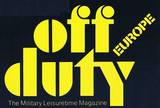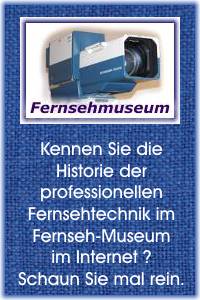"off duty" 1970 - 1997 - eine Freizeit-Zeitung für's US-Militär
Die in diesem amerikanischen (Freizeit-) Shopping-Magazin angepriesenen Hifi- und Video-Produkte waren auschließlich amerikanischen und kanadischen Militärangehörigen zugänglich - also zu kaufen - und vor allem zu ganz ungewöhnlich (verblüffend) niedrigen US $ Military-Preisen. Zu der einführenden "off duty" Seite geht es hier lang. - Um 1970 begann der weltweite Hifi-Boom bis zum 1. Crash 1978 und dann wieder zum 2.Crash um 1990. Über die 20 Jahre nach 2001 lesen Sie mehr in den Kolumnen auf diesen japanischen Seiten.
.
Hifi-"Spezialgeräte" aus 1974
Hier werden die damals noch "besonderen" oder "anderen" Hifi-Einzelgeräte - die "separates" - aufgelistet und beschrieben und auf dieser Seite mit Military-Preisen verbunden. - Zu dieser speziellen Hifi- Einzelgeräte- Liste des Vorjahres 1974 geht es hier lang. Irgendwie muß der finanzielle Leidensdruck der Inserenten gestiegen sein, denn die produkt-Anzeigen wurden weniger. Und vermutlich waren damit die Einträge in dieser "annual survey" - jährlichen Marktübersicht in den Anzeigenpreisen enthalten. Das war also in keiner Weise ein neutraler Überblick über das Gesamtangebot.
.
Die Einführung zu dem Thema : "The Dream Machines"
Special components give your system the individual touch.
By STEVEN RAUTENBERG - Off Duty / Europe / January 1975
Audiophiles dont like all-in-one receivers
THE AUDIO FANATIC has a special place in hi-fi history, for it was his tinkering with a music system's individual components that started it all - the dedicated quest for perfection in sound. It is he who eagerly tries out new gadgets that often find their way eventually into our ever more sophisticated audio components. So while the majority of audiophiles opt for the convenience of all-in-one receivers, there remains a hard core of fans to whom hi-fi is a creative plaything.
They demand the flexibility of separate preamps, power amps, equalizers and other esoteric components. They tailor their music systems to suit a particular whim, whether it's the ultimate in power, a maximum of controls, the last ounce of purity or new and exotic sounds.
All this and more is packed into the Off Duty SHOPPER we call "Special Components," together with a brief description of the role each can play in your enjoyment of hi-fi.
Preamplifiers.
The signal from a sound source such as a tuner, tape deck or phono cartridge is too weak to drive a power amplifier. A preamplifier increases its strength and prepares the signal, by means of equalization, so the power amplifier can handle the signal from any sound source with equal efficiency and deliver a "flat" output to the speakers.
The preamp is the system control center, with input switches, filters, tone and level controls. A separate preamp is usually more elaborate than the preamp built into a receiver. It will handle more inputs, and its circuitry (on higher priced units) is more sophisticated, especially in the high gain, low noise circuits employed in phono input stages.
Some inputs now have expanded tone controls similar to those on a separate equalizer. A new and costly preamp feature is a signal processing circuit using computer logic to analyze the incoming signal and modify it to compensate for sonic compromises made during the recording process.
.
Power Amplifiers. (und die RMS Angaben)
The job of the power-amp is to boost the signal from the preamp to create a strong enough signal to drive your speakers. Not only do separate power amps provide greater power outputs, but these ratings tend to be more conservative and therefore a more honest interpretation of power capabilities.
Complete powerspecs will indicate the rms power when driven into 8 ohms with all channels operating without exceeding a given amount of distortion at full frequency range (20-20k Hz). Power bandwidth represents the range of frequencies over which an amp will deliver at least 50 per cent of its rated output.
The Fair Trade Commission (FTC - das sind die US Wettbewerbshüter)) will soon require similarly explicit specifications for all audio components, but until fully implemented, you can count on separate components for the most accurate and complete power ratings.
Equalizers.
By dividing the audio spectrum into narrow segments such as octaves, an equalizer permits control and fine adjustment of the sound to a much greater extent than conventional tone controls. With it you can compensate for acoustical deficiencies in the listening room such as standing waves or minimize the coloration of sound caused by peaks and valleys in the frequency response of another component such as a phono cartridge or loudspeaker.
Since each musical instrument has its own distinctive sonic characteristics, an equalizer can be used to boost it, suppress it or change its total color by manipulating controls on the range of octaves covered by the instrument. The more elaborate the equalizer the greater the flexibility it affords.
Reverberation Units.
Since many of the exotic sounds in today's rock recordings are produced with reverb, why not add reverb to your own sound system if it's to your taste? It's done with feedback and a small amount of it gives a spatial, auditorium -like effect, while a heavy dose can blow your mind. Reverb units are connected to the sound system through the tape monitor. In addition to a time delay control for adjusting the amount of reverb, they usually feature shimmering front-panel lights to add a visual touch to their exotic sound.
.
Noise Reduction Units.
Now almost universal in the quality cassette recording field, the noise reduction system known as Dolby (after its Inventor Dr. Ray Dolby) is making inroads in FM broadcasting. Some FM stereocasts are already Dolby-ized, and now that the system has official FCC sanction, Dolby processing of FM transmissions will soon be widespread.
The Dolby circuit built into cassette equipment can be used for FM in the case of only a few late model decks with built-in Dolby-FM switching that includes a change in FM de-emphasis from 75 to 25 microseconds.
There are already a few tuners and receivers on the market with Dolby capability, but audiophiles can also convert existing systems by adding Dolby as an accessory. The most elaborate models offer separate Dolby circuits for recording and playback, ideal for 3-head tape equipment. Lower priced units with oneDolby circuit per channel are for use with two-head tape decks where there is no monitoring of the tape during recording, and the Dolby unit is switched from recording to playback mode as needed.
Add-on Dolby units also offer the extra flexibility of calibration controls and a built-in 400 Hz Dolby signal generator, features omitted in all but the most expensive cassette tape decks.
There are other noise reduction systems on the market; JVC has built into their cassette decks their own ANRS system which is compatible to prerecorded Dolbyized tapes. Another is the dbx system which reduces noise and can expand dynamic range. There will soon be pre-recorded dbx records and tapes but the Dolby system remains the market leader for general audiophiles yearning for tapes and FM transmissions that are free of background hiss.
.
4-channel adapters.
While many audiophiles jump into quadraphonics with both feet by buying a complete 4-channel rig, others prefer to do it a step at a time. Yes, you can convert to "quad" in easy stages.
First requirement is four loudspeakers, which can be connected to a conventional stereo amplifier in a "speaker matrix" hookup by means of an adapter. This type of surround sound is little more than pseudo-quadraphony, since it captures only some of the out-of-phase rear channel information in matrix recordings and is useless for discrete 4-channel.
But after this low-cost start you can add the necessary amplifier to drive those rear-channel speakers independently. It's then that the decoders enter the picture SQ and QS for matrixed 4-channel, and a CD-4 demodulator for discrete quadradiscs. As all three of these sophisticated 4-channel systems will be with us for a long time to come, they are all included in latest all-in-one quadraphonic receivers.
They are also available separately and in various combinations. The best of them have logic circuitry to sharpen the corner-to-corner separation of all four channels and a synthesizer that enhances the sound of stereo played through 4-channel equipment.
- Anmerkung : Hier wird versteckt darauf hingewiesen, daß erst die auf ICs basierenden Zusatzgeräte die echte funktionierende Logic eingebaut haben. Es wird natürlich nicht bemängelt, daß die allermeisten Quadrogeräte vor 1975 richtiger Murks waren.
.
Miscellaneous:
There are many other types of special components being produced which make interesting additions to a stereo system. Among those available to military buyers are switching units, electronic dividers, and test units.
If you are the type who has built up a collection of different types of equipment over the years and likes to make comparisons, you probably have some method which allows you to connect the various pieces of gear into your system.
The whole process can be simplified with one of the comparator units now available. They vary in complexity from simple switch circuits to relay operated, remote controlled professional units. Again, these are items for the real audio enthusiast, but they sure beat stringing things together with alligator clips.
When a loudspeaker system splits up the incoming signal to divide it among the various speaker elements (woofers, tweeters, etc), the cost in power is actually greater than most people realize. For this reason, the electronic crossover networks were designed to be used before the power amplifiers thereby increasing the efficiency of the overall system.
This, then, requires additional amplifiers, and is called the bi-amp or tri-amp system depending upon the number of divisions produced. Several manufacturers produce these electronic crossover units which are crossovers only and not power amplifiers
One of the most entertaining pieces of gear is also the least necessary - the audio test unit. Actually, an attractively packaged oscilloscope, the units often have built-in oscillators, meters, switching circuits and calibration standards. The most complete models allow you to make some very exacting tests of professional quality and almost all have connections for FM multi-path displays.
.
.


